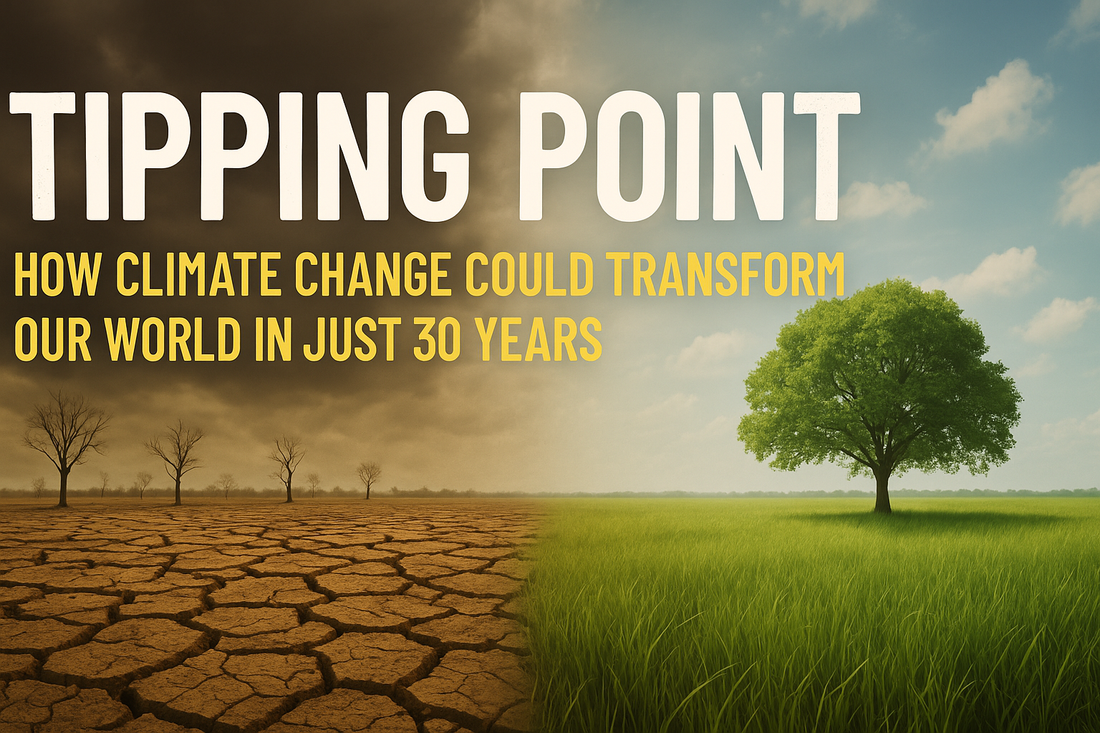
Tipping Point: How Climate Change Could Transform Our World in Just 30 Years
Share
We are rapidly approaching a point of no return. According to the United Nations Intergovernmental Panel on Climate Change (IPCC), the world must cut carbon emissions by nearly half by 2030 to prevent global temperatures from rising more than 1.5°C above pre-industrial levels. However, current projections show we are not on track. If we fail to act swiftly and decisively, the consequences for our planet and future generations will be severe.
The Narrowing Window to Reverse Climate Change
Recent studies reveal that the Earth has already warmed approximately 1.2°C. Scientists warn that crossing the 1.5°C threshold could lead to irreversible tipping points, such as:
- Collapse of the Greenland and West Antarctic ice sheets
- Massive die-off of coral reefs
- Release of methane from thawing permafrost
Data Point: As of 2024, global CO2 concentrations are at 419 ppm (parts per million), the highest in over 3 million years.
What the Next 30 Years Could Look Like
If current trends continue, by 2055 the world could face:
1. Uninhabitable Regions
- Parts of the Middle East, South Asia, and Africa could become too hot to live in, with temperatures regularly exceeding 50°C.
- Sea levels could rise by 0.5 to 1 metre, displacing over 200 million people.
2. Global Food Shortages
- Droughts and floods will devastate crops. Staple foods like wheat, rice, and maize may become scarce.
- Fish populations could collapse due to ocean acidification and warming.
3. Biodiversity Loss
- Over 1 million species are at risk of extinction.
- Tropical rainforests, coral reefs, and polar ecosystems will see catastrophic losses.
4. Economic and Social Instability
- Climate-related disasters could cost the global economy over $1 trillion annually.
- Water scarcity could lead to mass migration and conflicts over resources.
5. Health Impacts
- Rising temperatures could cause an increase in heat-related illnesses and vector-borne diseases like malaria and dengue.
- Poor air quality may lead to a surge in respiratory conditions and cardiovascular diseases.
What Can Still Be Done
The window is small, but hope is not lost. We can still:
- Transition to renewable energy sources like wind, solar, and hydro
- Invest in reforestation and regenerative agriculture
- Implement carbon pricing and stricter emissions regulations
- Reduce individual carbon footprints (e.g., travel less, eat less meat, conserve energy)
Data Point: Transitioning to 100% renewable energy globally by 2050 could avoid over 70% of projected climate-related deaths.
Conclusion
We are living in a decisive decade. The actions—or inaction—of this generation will shape the course of human history and the fate of the Earth. The current age group between 10 to 20 will be the decision-makers in next decade. We need to focus on educating them about the impact. The time to act is now. Let us rise to the challenge and steer our planet back from the brink.
#ActOnClimate #ClimateCrisis #SustainableFuture #NetZero2050


